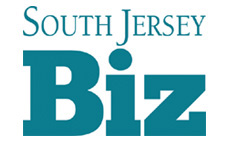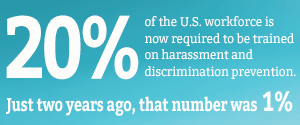
At the outset of 2025, the new year was met with a mix of emotions, differing degrees of confidence and caution, and general uncertainty for what’s to come and its impact on the cost of doing business.
And while the first six months have been pockmarked with rising inflation, troubling layoff trends and whispers of a recession rearing its head, professionals in the banking and finance fields are decidedly relieved that the worst hasn’t yet come to pass.
“The anticipation was the world was coming to an end, and what’s happening doesn’t seem to be cooperating that way,” begins Stan Molotsky, president and CEO of SHM Financial Group. “To predict is one thing, but to be realistic, you have to learn to go with the flow and just make sure that you’re positioned to be protecting yourself no matter what happens—by doing it that way, you can sleep a lot better at night. And that’s, I think, the goal for how people should be reacting when you look at all the uncertainty that’s around us: Protect yourself, hope for the best but prepare for the worst.”
A 2025 that’s performing better than expected doesn’t necessarily mean all is well, however.
“We are all operating in a very competitive deposit rate environment, and for many New Jersey institutions, we are paying some of the highest deposit interest rate yields in the country, which is certainly compressing margins for all of us,” notes Mike Dinneen, CEO of First Harvest Credit Union.
Beyond market performance and current events, though, are lingering fears that a perfect storm could land an unexpected hit, and worries about a recession persist. Managing very human reactions to a barrage of stormy news items and ever-changing developments is all part of the job for the region’s financial professionals as they seek to address their customers’, clients’ and members’ biggest concerns with historical context and experiential insight.
“Everyone is concerned about what are rates going to do, what shoe might drop, the economy and how is it affecting my business. I don’t think it’s fear, but I think it’s concern,” says Mike Affuso, president and CEO of New Jersey Bankers Association. “I just think there’s a lot of uncertainty right now: Depending upon the day and the way the tariffs are—and it’s not just tariff policy, it’s general uncertainty. I think people are just being very cautions right now because of the uncertainty, and I think the caution will end when the uncertainty ends. I also think you may see a recession, if we’re not in one right now—I feel like, right now, it’s too hard to tell. We’re hearing of layoffs in business, but you’re not hearing about mass layoffs; I think it’s more of a hiring slowdown than accelerating layoffs.”
But difficult or uncertain times can highlight just how willing trained professionals are to help others tap into—or rediscover—solutions that help them successfully overcome unusually rough terrain.
“As we began 2025, there were predictions that several [Federal Reserve] rate changes were likely during the year … While we haven’t seen as many rate changes as anticipated so far this year, attention has focused on the uncertainty related to tariffs,” begins James Andreacci, OceanFirst Bank’s commercial lending market president – South Jersey. “Our commitment is to helping our customers, and this is particularly important for our business clients during times of uncertainty like we have had this year. Strong and open communication is essential, and has proven beneficial as our clients lean into our banking professionals as resources and problem-solvers. … Many of our business clients have learned from the challenges they faced during the pandemic and have developed unique expertise navigating alternatives for supply sources.”
Experts also note that doing business in New Jersey has historically insulated the region’s residential and commercial residents from the worst impacts of economic maelstroms and turbulence, thanks in part to its geographic position.
“This area is never the strongest of the economic areas but nor is it ever the weakest: I think you can safely say we’re in the middle, which is a good position to be in,” Molotsky notes. “We never see the big booms and we never see the hard declines, and I think we’re positioned politically and economically to take advantage of that. We’re close to New York and Washington (D.C.) and Philadelphia, but we’re also far enough away from them that, if they’re going through difficult times, we don’t have to have as difficult a time in South Jersey, and that’s been, I think, our strong suit in functioning.”
It has made for a banking and financial landscape that is both adaptable and still characterized by robust offerings.
“I think our banks’ capital levels are at very, very healthy levels, so that certainly is a good thing,” Affuso points out. “At the end of the day, when you’re looking at banks, you look at capital, you look at asset quality, the loans are holding up—the loans are the assets of the bank, and those assets are holding up quite well, people are making their payments. So when you look at that, OK, we look good. Just because there’s concern doesn’t mean there’s going to be a problem, it just means there’s concern and that we can’t amble blindly forward and pretend that there’s not a concern. … I would tell anybody, whether it’s a business or a person, to prepare and save some money so you have resources ready to deploy if either some time problem arises or some time or opportunity arises. My grandfather used to always say that chance favors the prepared mind.”
Of course, national trends still make their way into South Jersey operations, especially when it comes to the adoption of technology that facilitates conveniences like mobile banking and more immediate payment transfers.
“It’s all about money movement and the speed and less friction,” says Brian Hahn, American Heritage Credit Union’s COO, who adds that the ability to deliver real-time payments is gaining traction. “It’s the idea of this open-concept banking, if you will, where all these financial institutions are open in the sense that the account information is kind of like a shared loop. This allows the money to move in real time so, instead of doing a wire transfer and waiting a day to get the money or doing an ACH (Automated Clearing House) and waiting two days to get the money, you click the button and it’s at the destination. Think about this as it trickles down to the consumer: You as a consumer owe your landscaping company $40 for coming out to cut your grass—boom, real-time payments, there’s no invoicing. It’s kind of like Venmo on steroids.”
Artificial intelligence (AI) tools are among the newest gizmos and gadgets finding their place in an array of applications, and banking is no different—though it is taking a deliberately cautions approach to integration.
“Everybody’s talking about generative AI and different language models, and that’s not lost on us either: I think it’s important that all banks, big and small, are taking a prudent approach as it relates to generative AI as a copilot, as a tool—not a replacement,” says Manny Tocco, COO/head of business banking strategy and credit operations of Citizens Bank. “I don’t think that we want to end up starting to apply AI in its current phase to be able to adjudicate a credit decision: The way that we’re looking at it is more like repetitive-task-oriented where it can help. … We actually have a generative AI council that makes sure that we have very tight guardrails, additional toll gates, to ensure that we’re not unintentionally getting too ambitious as it relates to AI utilization.”
Integrating technology is a challenge unto itself. Beyond the growing pains and learning curve of the early stages of adopting modern offerings and then maintaining them once they’re operational standards, those institutions tasked with safeguarding our financial assets do everything in their power to rally their teams and tools to offer the cutting-edge cybersecurity that both stays ahead of nefarious entities’ knack for weaponizing modern instruments and offers clients some peace of mind.
“Of course, cybersecurity and fraud protection in the banking industry is always a focus to help our customers protect themselves from the continuing increase of attacks,” Andreacci points out. “OceanFirst has implemented automation in this area, with clients able to respond via text and email, in addition to our bankers in local branches and at our customer care center, to alert the bank of potential issues as quickly as possible. OceanFirst commercial and business banking clients that use our treasury-management platforms have additional technology available that allow for monitoring of check-writing and ACH activity on their account as added assistance for fraud monitoring.”
But no matter how far technological tools and solutions progress, in-person interaction is still the best way to seek out individually tailored advice and foster strong relationships with trusted financial advisors, which is why Tocco is confident that while physical branch locations might become more strategically located, they remain “the heartbeat of the banking community” and will never completely exit the communities they both serve and employ.
“We still see an immense amount of foot traffic, a lot of our new checking household acquisitions still come through the brick-and-mortar footprint, so we don’t see that going away,” he says. “I see community banks, regionals, even money centers still playing a vital role in terms of their physical location, but … I think it’s going to be much more advice-driven, so a customer’s going to want to end up going into a branch to seek advice for state-tax wealth planning, or how can a small-business banker help in terms of debt capital needs or getting on the right money movement Treasury platform. Those are the types of conversations that I think are going to be had, and I think that happens at a grassroots level within community banking.”
While predicting the future has proven time and again to be a difficult task, patterns and cycles do emerge that can help anticipate the general direction and trends to come, while understanding the current state of things and abiding by seasoned professionals’ lived-in wisdom can also point to best practices for riding out tricky scenarios.
“Over the last five years, business decision-makers should know that there is no more ‘normal,’ and organizations that can be nimble will survive,” Dinneen observes. “I would expect the rest of the year to bring uncertainly to the interest rate environment as Treasury yields continue to increase, while many leaders are hoping for a Federal Reserve rate cut. In our instance, there is also great uncertainly around our regulatory environment. At the end of the day, institutions that are safe and sound, and provide a meaningful service to their constitutions, should survive any regulatory environment.”
No matter how much the world changes, how technology drives innovation and new consumer behaviors, or how today’s fiscal uncertainty impacts the second half of 2025, one thing consistently rings true of not only South Jersey but also the world beyond The Garden State: Humans are inherently community-seeking creatures, and nothing brings out the best in dedicated professionals like the opportunity to help their neighbors face an unknowable future with confidence and community.
“Communicate. Talk to your trusted people at your financial institutions, talk to us early, talk to us often. We want to know what’s going on. If you’re up against a problem, we want to know. We’re here to help you, we’re not here to judge you,” Hahn affirms. “We work for our members and we want our members to engage with us. In this digital world where everybody’s heads are in their phones, that person-to-person communication has become much less common. Talk to people you trust, talk to your mentors, build those relationships and collaborate. We’re all in this together.”








